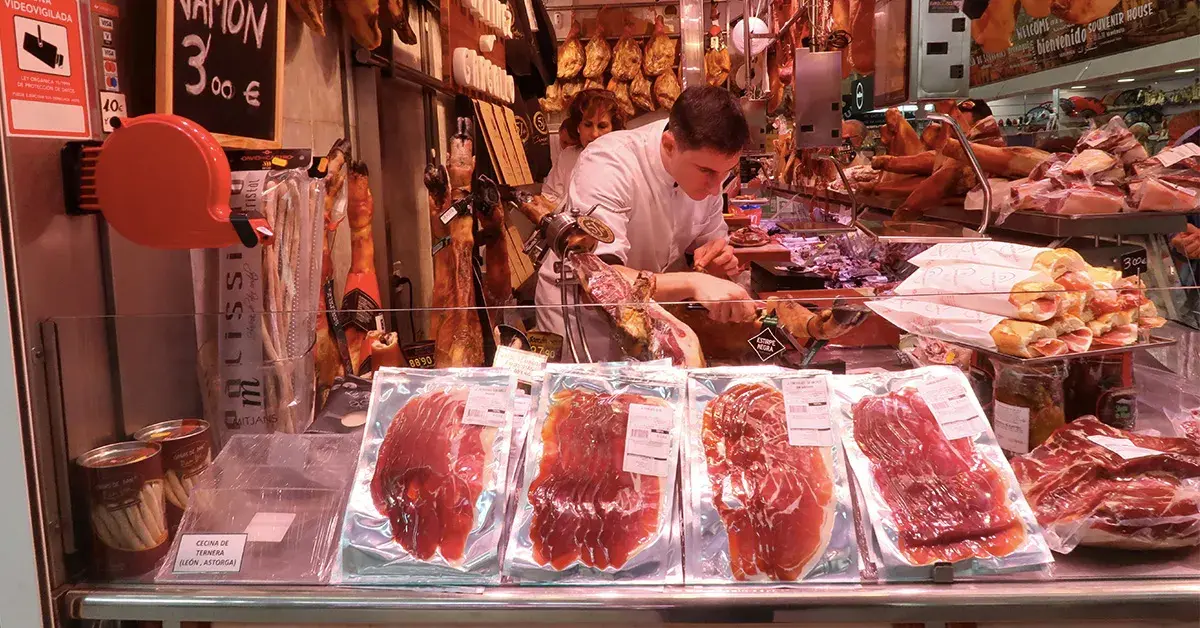Bagley Farms Meat Market Edwardsville IL: Your Relied On Resource for High-Quality Meats
Bagley Farms Meat Market Edwardsville IL: Your Relied On Resource for High-Quality Meats
Blog Article
Uncover the Art of the Butcher's Cut in a Modern Meat Market
In the ever-evolving landscape of contemporary meat markets, the butcher's cut has transcended its traditional origins, combining olden craftsmanship with modern methods. What genuinely establishes the modern-day butcher apart is their ability to build a deeper link between customers and the beginnings of their meat.
Development of Butchery Techniques
The development of butchery strategies shows a rich tapestry of technology and adaptation driven by innovations in innovation, adjustments in consumer need, and a much deeper understanding of meat science. Historically, butchery was a craft passed down with generations, with methods developed over centuries to make best use of yield and taste. Nonetheless, the industrial change ushered in automation, changing traditional methods and making it possible for large-scale processing.
The mid-20th century saw butchery techniques better fine-tuned by scientific understandings right into muscular tissue biology and meat aging, boosting both tenderness and taste. Advancements like vacuum product packaging and refrigeration prolonged item shelf-life, permitting butchers to expand offerings and improve quality assurance. This period likewise marked the increase of specific tools, such as band saws and meat slicers, which raised accuracy and effectiveness in meat processing.

Computerized systems currently help in tracking pet provenance and maximizing cuts to satisfy specific consumer preferences. Additionally, a rebirth in artisanal butchery has arised, mixing standard skills with modern-day understanding to provide to consumers seeking honest and sustainable meat alternatives.
Comprehending Meat Cuts
Comprehending the intricacies of meat cuts is necessary for both butchers and consumers seeking top quality and value. For butchers, exact cuts mirror skill and respect for the craft, making certain minimal waste and optimum return.

Understanding muscular tissue structure is vital; muscle mass used more regularly by the animal often tend to be tougher and are best suited for slow-moving cooking approaches, while less-used muscular tissues, like those discovered in the loin, are much more tender and perfect for barbecuing or roasting. Familiarity with these differences empowers customers to make informed choices, boosting their culinary undertakings.
Selecting Top Quality Meat
Selecting the right meat includes even more than simply picking an aesthetically appealing item from the display. bagley farms meat market edwardsville il. The art of choosing quality meat needs a critical eye and knowledge of details qualities that indicate freshness and quality. Firstly, take note of the shade; beef ought to have an intense, cherry-red shade, while lamb must exhibit a soft pink tone, and pork a light pink. This suggests the meat is fresh and hasn't been subjected to oxygen for as well lengthy.
Second of all, consider the marbling, which refers to the white flecks of fat within the muscle mass. Proper marbling is a vital indication of tenderness and flavor, as it melts during cooking, boosting the meat's juiciness. Remember, higher marbling commonly correlates with exceptional high quality cuts, such as USDA Prime.
Texture is another important element; check here meat ought to feel firm to the touch, not slimy or overly soft. Additionally, be mindful of the fragrance. Fresh meat must have a tidy, neutral odor, complimentary from any type of sour or repulsive odors.
Matching Cuts With Cooking Methods

On the other hand, harder cuts like brisket and chuck roast are abundant in collagen, which breaks down into gelatin when prepared gradually. These cuts are ideal for braising or sluggish roasting, permitting the meat to soften over time and establish deep, complicated tastes. In a similar way, cuts such as brief ribs and pork shoulder make out well with slow-cooking methods, where extended cooking times transform their robust structures right into delicious meals.
Lamb shanks and oxtail, which require extended cooking to tenderize, are ideal candidates for cooking or sluggish simmering. These techniques coax out rich, hearty tastes while keeping dampness. By recognizing the one-of-a-kind features of each cut, chefs and home cooks alike can elevate their cooking developments, making sure each meal is both satisfying and unforgettable.
The Butcher's Role Today
Navigating the evolving landscape of the modern-day meat market, the butcher's duty today prolongs past plain prep work of cuts. Contemporary butchers are cooking artisans, educators, and supporters for sustainable techniques. They bridge the void between the ranch and the fork by making sure ethical sourcing, comprehending animal husbandry, and prioritizing transparency in the supply chain. This change reflects the expanding consumer need for quality over quantity, where provenance and pet well-being are paramount. visit this page
In enhancement to crafting precise cuts, butchers currently involve directly with clients, supplying cooking recommendations and tailoring choices to match individual requirements and choices. Their experience in meat aging, marbling, and flavor profiles encourages consumers to make educated choices, improving their cooking experiences. This personalized service exemplifies the butcher's advancing role as a trusted consultant in the kitchen area.
In addition, butchers are pivotal in reducing waste, using entire pets to create diverse Go Here products such as sausages and stocks. This detailed strategy not only appreciates the animal yet additionally straightens with contemporary sustainability goals. By doing this, the contemporary butcher symbolizes both practice and development, adapting to an ever-changing market while protecting the creativity and stability of their craft.
Final Thought
The modern butcher's craft delicately weaves standard strategies with modern-day innovations, highlighting sustainable methods and honest sourcing. Mastery in comprehending diverse meat cuts and high quality indicators empowers butchers to offer educated suggestions, lining up particular cuts with ideal cooking methods. This know-how not just raises culinary experiences but additionally enhances the link between consumers and the beginnings of their food. By recognizing historical practices while embracing modern demands, the butcher's function remains vital in today's advanced meat market (bagley farms meat market edwardsville il).
Report this page